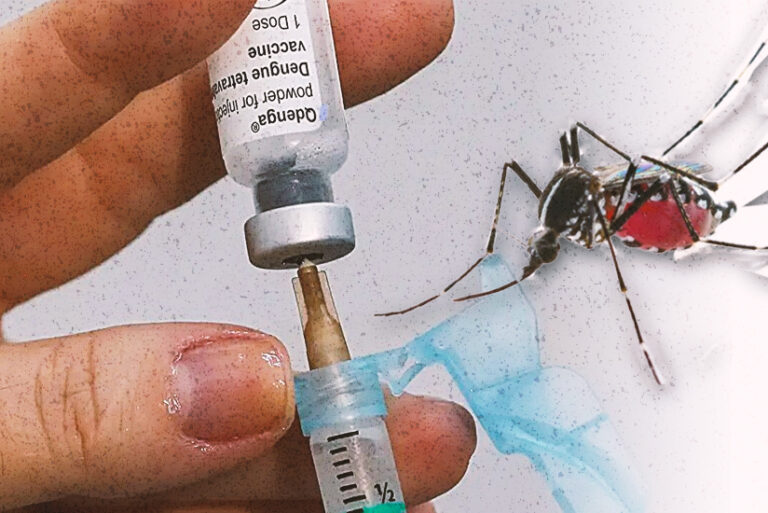By Henrylito D. Tacio
This happened in 2017. Two days after celebrating Independence Day, residents of Davao City woke up with the sad news that nine people died on the spot, 2 more pronounced dead-on arrival and 8 others injured when a passenger van hit a 6-wheeler forward truck. The accident happened at Kilometer 21 in Budbud, Bunawan district.
The van, coming from the town of Monkayo and going to Davao City, tried to overtake another vehicle. The driver didn’t see the speeding truck on the same lane that resulted in a collision and caused the sudden death of more than half of the 16 passengers.
“The speed limit ordinance of Davao City is aimed specifically at putting an end to deadly vehicular accidents in the city,” said Paolo Duterte, who was then vice-mayor, in a statement issued after the accident.
“When it was first implemented four years ago, we saw a remarkable decrease in deaths from vehicular accidents,” the eldest son of President Rodrigo Duterte pointed out. “This year though, we again observed an increase in incidents of vehicular mishaps.”
The incident is one of the many road accidents that happen every now and then in the country. Among the most common ones are crashes, collisions, rollovers, and pedestrians hit by various types of vehicles. Also included are those people who die because of a vehicle plowing into the roadside homes, stores, and stalls.
The annual number of road traffic deaths fell slightly to 1.19 million per year, according to the latest WHO report. Yet with more than 2 deaths occurring per minute and over 3200 per day, road traffic crashes remain the leading killer of children and youth aged 5–29 years.
The latest WHO global status report on road safety 2023 shows that, since 2010, road traffic deaths have fallen by 5% to 1.19 million annually. Yet, road crashes remain a persistent global health crisis, with pedestrians, cyclists and other vulnerable road users facing an acute and rising risk of death.
“The tragic tally of road crash deaths is heading in the right direction, downwards, but nowhere near fast enough,” says WHO Director-General, Dr Tedros Adhanom Ghebreyesus. “The carnage on our roads is preventable. We call on all countries to put people rather than cars at the center of their transport systems, and ensure the safety of pedestrians, cyclists, and other vulnerable road users.”
Earlier WHO reports said road accidents kill someone every 24 seconds. It may come as a surprise, but more people die from road crashes than from HIV/AIDS (human immunodeficiency virus and acquired immune deficiency syndrome), tuberculosis and diarrheal diseases, the UN health agency said.
In the Philippines, 35 Filipinos die of road accidents every day, with an additional 348 left with serious disabilities, statistics show. In fact, the WHO has touted the Philippines as one of the “deadliest” countries in terms of road safety.
“One death is too many when it comes to road crashes because we know that it is highly preventable,” said Dr. Gundo Weiler, WHO Representative in the Philippines. “There are proven solutions available to protect Filipinos on the road.”
Pedestrians and riders of bicycles, motorcycles and mopeds are the people most likely to be injured in crashes, studies show.
Oftentimes, most of the victims are males, “because they are more likely to drive while under the influence of alcohol and to speed or engage in other reckless behavior,” according to a study conducted by the European Road Safety Council.
Deaths would not have happened if it weren’t for the consumption of alcohol. A twenty-one-year-old was having a drinking spree with his college friends that he had not seen for three years when his wife Marianne, 18, stormed in and said, “What happened to you? We won’t be able to attend the wedding tomorrow if we don’t travel now.”
The couple left, riding on a motorcycle. It was already late in the evening and Joseph was driving fast. What he didn’t know was that the road was being fixed. It was too late when he found it. Their motorcycle flew and Marianne, who hit the steel that served as a barrier, died instantly.
Joseph was still breathing. Those who witnessed the accident immediately took him to a hospital. The doctors tried to save his life but after two days of being in a coma, Joseph finally succumbed.
The recent WHO report shows that 28% of global road traffic deaths occurred in the WHO South-East Asia Region, 25% in the Western Pacific Region, 19% in the African Region, 12% in the Region of the Americas, 11% in the Eastern Mediterranean Region and 5% in the European Region.
Nine in 10 deaths occur in low- and middle-income countries, and fatalities in these countries are disproportionately higher when set against the number of vehicles and roads they have. The risk of death is 3 times higher in low-income than high-income countries, yet low-income countries have just 1% of the world’s motor vehicles.
Fifty-three per cent of all road traffic fatalities are vulnerable road users including: pedestrians (23%); riders of powered two- and three-wheelers such as motorcycles (21%); cyclists (6%); and users of micro-mobility devices such as e-scooters (3%). Deaths among car and other 4-wheeled light vehicle occupants fell slightly to 30% of global fatalities.
Pedestrian deaths rose 3% to 274,000 between 2010 and 2021, accounting for 23% of global fatalities. Deaths among cyclists rose by nearly 20% to 71,000, accounting for 6% of global deaths.
Meanwhile, research indicates that 80% of the world’s roads fail to meet pedestrian safety standards and just 0.2% have cycle lanes, leaving these road users dangerously exposed. And while 9 in 10 people surveyed identify as pedestrians, just a quarter of countries have policies to promote walking, cycling and public transport.
In the Philippines, road accidents are the fourth leading cause of death. Among the famous personalities who died of road crashes include Lino Brocka, Dan Campilan, Jon Hernandez, Jay Ilagan, AJ Perez, Dulce Saguisag, Ric Segreto and Eddie Peregrina.
With high tolls in lives and health, “the public reaction would be predictable, with screaming headlines and social media hashtags all over the place,” said an Inquirer editorial. “Legislators would immediately call for an investigation, while entire communities would be put on high alert.”
But such is not the case. In fact, road accidents “rarely make the headlines.”
To think, most hospital records revealed that road accidents contribute about 40% of all types of accidents. “There’s no accurate figure on the number of deaths caused by vehicular accidents in the Philippines. We only read the usual death count repeated after a television or radio report,” writes Atty. Romeo Pefianco in a national daily.
Moneymax single out human error as “responsible for the majority of road accidents in the country.” The Philippine National Police claim human error accounts for eight to nine in every 10 accidents throughout the country. Most authorities believe “the lack of driver’s training contributes to human error.”
Human error also includes “actions resulting from the driver’s negligence, distraction, or physical challenge, such as loss of control, drunk driving, bad overtaking, texting while driving, and over speeding.”
Moneymax adds: “Vehicle defects, such as mechanical issues and lost brakes, are also leading road accident causes.” The most common mechanical troubles include worn-out or under-inflated tires, suspension and steering issues, headlight/tail light malfunction, engine and transmission problems, and faulty windshield wipers.
In recent years, using mobile devices while driving is one of the contributing factors of road accidents. Bestselling author Jonathan Anthony Burkett offers this explanation: “There’s a difference between driving and texting. When you’re driving, your eyes have to be opened and, on the road, watching the cars around you, road signs, and traffic lights. Along with your mind on the road and destination. Which means you are multitasking. When you’re texting, your eyes are on your mobile phone screen and keypad. Along with your mind on what you’re going to say next. So how can you do both?”
All over the world, despite all the laws and reminders, road accidents still happen. Globally, it is estimated that there are now roughly 100 million families coping with the deaths or disabilities of family members who were injured in a road traffic collision, recently or in the past.
“They are coping with grief for the dead and care for the disabled,” the UN health agency said. “Often, they are also living with reduced incomes, increased expenses and the burden of dealing with police, courts, insurers, medical systems, and other bureaucracies.” – ###








